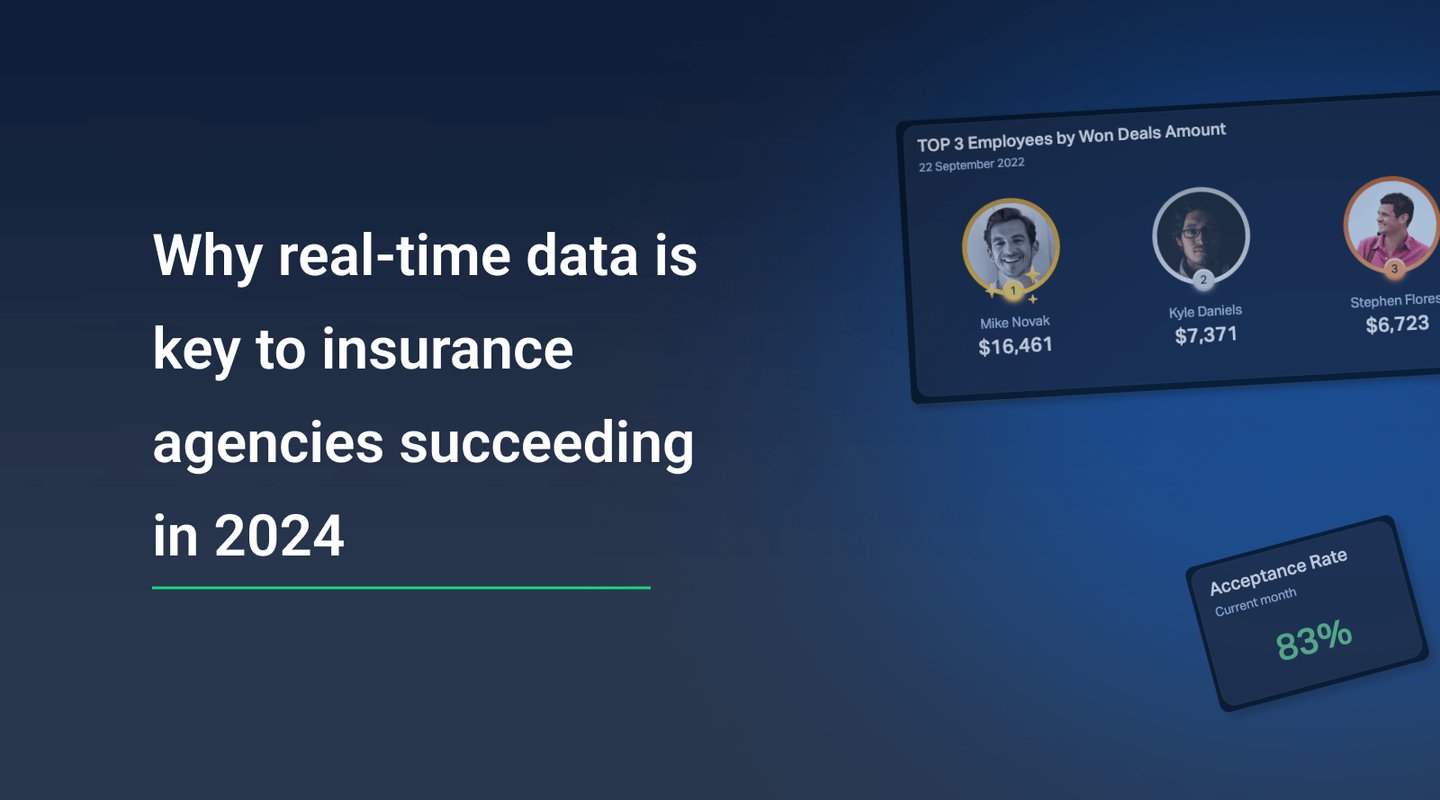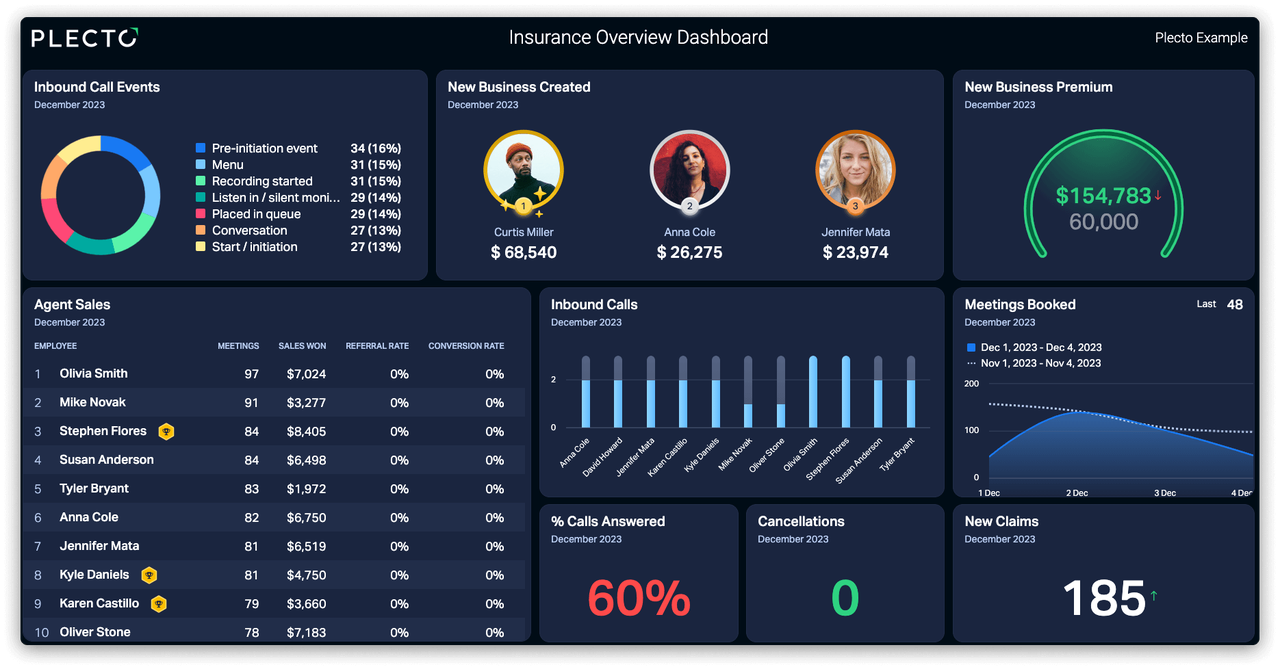Data has transformed the way organizations operate across industries, business verticals, geographic locations, and more. The insights data generates help businesses reduce costs, increase sales, improve profitability, and increase employee satisfaction. However, not all types of data are created equal. Businesses that must respond to changing customer needs and preferences need data to be processed in a much tighter timeframe compared to other industries.
Insurance companies especially need data to be collected, analyzed, and shared in real-time to deliver timely insights to help them solve pain points that are experienced throughout the industry. Here is how real-time insurance data enables agents to improve operations while keeping customers happy.
5 ways real-time insurance data helps employees serve their clients better and improve operations
1. Find products that align with customers’ unique needs and preferences
Salespeople know that each customer is different and should be treated as such. Each customer has a unique set of needs and preferences based on their age, race, gender, income, and so much more.
Insurance companies use this information to develop a set of policies that can serve the needs of each segment effectively. Insurance agents then have to match these policies to the right customers after relatively short interactions with them.
Past interactions, customer profiles, and previous sales to similar customers analyzed in real-time can arm salespeople with the knowledge they need to present customers with policies that are most likely to appeal to them specifically.
2. Conduct customer outreach at the optimal time to maximize conversions
Similar to the approach taken with policy presentation, insurance companies must also understand the communication preferences of each customer. Insurance policies are usually sold after a relationship is developed between the agent and the customer, so styles and timing need to be aligned.
Salespeople must be aware of the communication and outreach strategies favored by each customer. This allows them to adjust their approach accordingly. Customers from different age groups prefer to learn about insurance policies in different ways and even within age groups, there is significant diversity of communication preferences.
This data has to be collected from each customer and disseminated to all customer touchpoints to ensure that all correspondence between the brand and the customer is fruitful and effective.
Build your first dashboard.
Start your 14-day free trial today
3. Use internal and external data to effectively detect fraudulent claims
Insurance companies have been fighting the challenge of claims fraud for decades. As malicious actors evolve in their approach, insurance companies must also improve their protection against fraud. Many indicators can help insurance companies identify fraudulent claims but analyzing each claim manually is ineffective and unpractical.
AI and ML-based data analytics systems that analyze claims in real-time can deliver on their promises to process claims in a specific timeframe. With the right software, insurance companies can more accurately process a claimant’s history, frequency of claims, credit score, and more in real-time.
4. Underwrite insurance policies with more confidence
Customers prefer to purchase policies with simplified underwriting. According to an industry survey, customers prefer simplified underwriting due to the convenience and transparency that it can provide.
Real-time data analysis can bring together a customer’s credit history, income, risk profile, and more to develop a policy with accurate and simplified underwriting that protects the interest of the insurer while still giving the customer the protection they need from the policy.

5. Create an environment of motivation and competition with clear and easy performance data visualization
Insurance agents are naturally competitive and the perfect way for insurance companies to harness this competitiveness is through gamification. This helps create a competitive environment that encourages agents to upsell, cross-sell, and close deals faster while hitting their insurance KPIs.
This competitive environment can also attract highly motivated salespeople to a business. As the insurance industry hires more people to meet growing demand, companies must come up with new ways to motivate, engage and retain a more diverse employee base. One European insurance provider that employed this technique to motivate their employees in the absence of commission-based remuneration models experienced a 60% employee growth after its implementation.
How a data-driven culture can help insurance companies make the most of real-time insurance data
Real-time insurance data analysis and clear and easy data visualization help businesses optimize operations and increase profitability. However, simply putting these data policies in place might not be enough for businesses to experience these benefits. A data-driven culture is often the difference between a data program failing to meet its goals and exceeding them.
Data democratization allows employees at every level to receive a holistic understanding of the organization and their role
Each salesperson, finance manager, and administrative employee has a specific role within an insurance company but the data they need to do their jobs often overlaps. As a result, the creation of a single source of truth makes it easy for team members to collect and share information in the most effective and efficient manner.

Effective information-sharing processes enable insurance companies to overcome the challenges caused by data silos
Data analysis doesn’t just help the employees who are dealing with complex administrative or financial workflows. Decision makers and policymakers can also use customer, sales, and operational data to develop new policies that customers want or that could increase profitability for the business.
Unfortunately, in the absence of a strong data-driven culture, information silos that prevent critical insight from being shared with business leaders can develop. Worse yet, the data that is available might not be up-to-date or accurate. A data-driven culture helps foster an environment of collaboration and knowledge sharing so that everyone has access to the most relevant information at all times. Looking forward to 2024, business leaders must, therefore, ensure that employees know how they can effectively engage in data sharing—and the benefits they can receive from it.
By leveraging real-time data, insurance companies can create a comprehensive view of their business that equips them to make more informed decisions that can lead to better products, improved customer service, and greater profitability in 2024 and beyond.
Loretta Jones is VP of Growth at Acceldata.io with extensive experience marketing to SMBs, mid-market companies, and enterprise organizations. She is a self-proclaimed 'startup junkie’ and enjoys growing early-stage startups. She studied Psychology at Brown University and credits this major to successful marketing as well as navigating a career in Silicon Valley. She’s a nature lover and typically schedules her vacations around the migratory patterns of whales and large ocean creatures.




